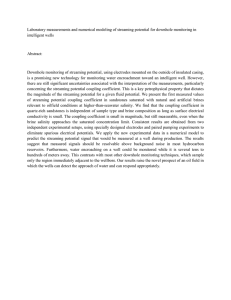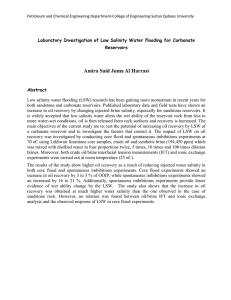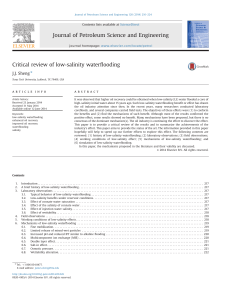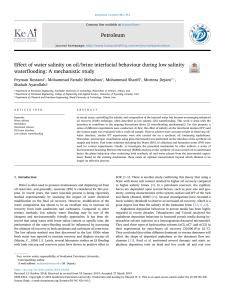ABSTRACT: We report experimental measurements of ...
advertisement
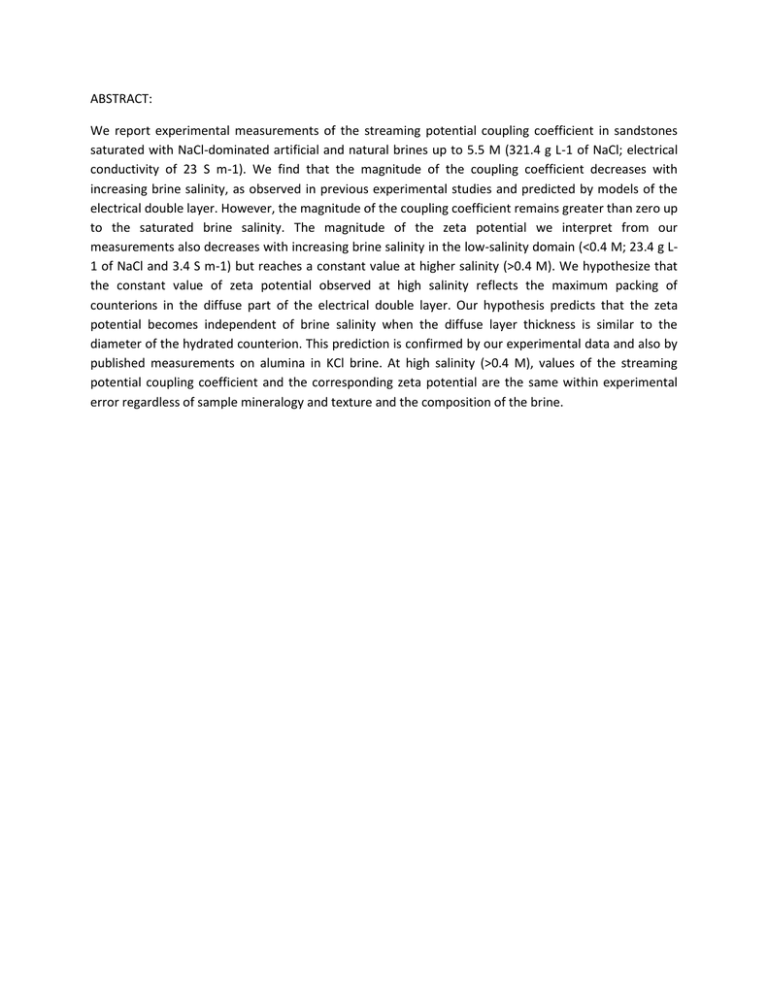
ABSTRACT: We report experimental measurements of the streaming potential coupling coefficient in sandstones saturated with NaCl-dominated artificial and natural brines up to 5.5 M (321.4 g L-1 of NaCl; electrical conductivity of 23 S m-1). We find that the magnitude of the coupling coefficient decreases with increasing brine salinity, as observed in previous experimental studies and predicted by models of the electrical double layer. However, the magnitude of the coupling coefficient remains greater than zero up to the saturated brine salinity. The magnitude of the zeta potential we interpret from our measurements also decreases with increasing brine salinity in the low-salinity domain (<0.4 M; 23.4 g L1 of NaCl and 3.4 S m-1) but reaches a constant value at higher salinity (>0.4 M). We hypothesize that the constant value of zeta potential observed at high salinity reflects the maximum packing of counterions in the diffuse part of the electrical double layer. Our hypothesis predicts that the zeta potential becomes independent of brine salinity when the diffuse layer thickness is similar to the diameter of the hydrated counterion. This prediction is confirmed by our experimental data and also by published measurements on alumina in KCl brine. At high salinity (>0.4 M), values of the streaming potential coupling coefficient and the corresponding zeta potential are the same within experimental error regardless of sample mineralogy and texture and the composition of the brine.


